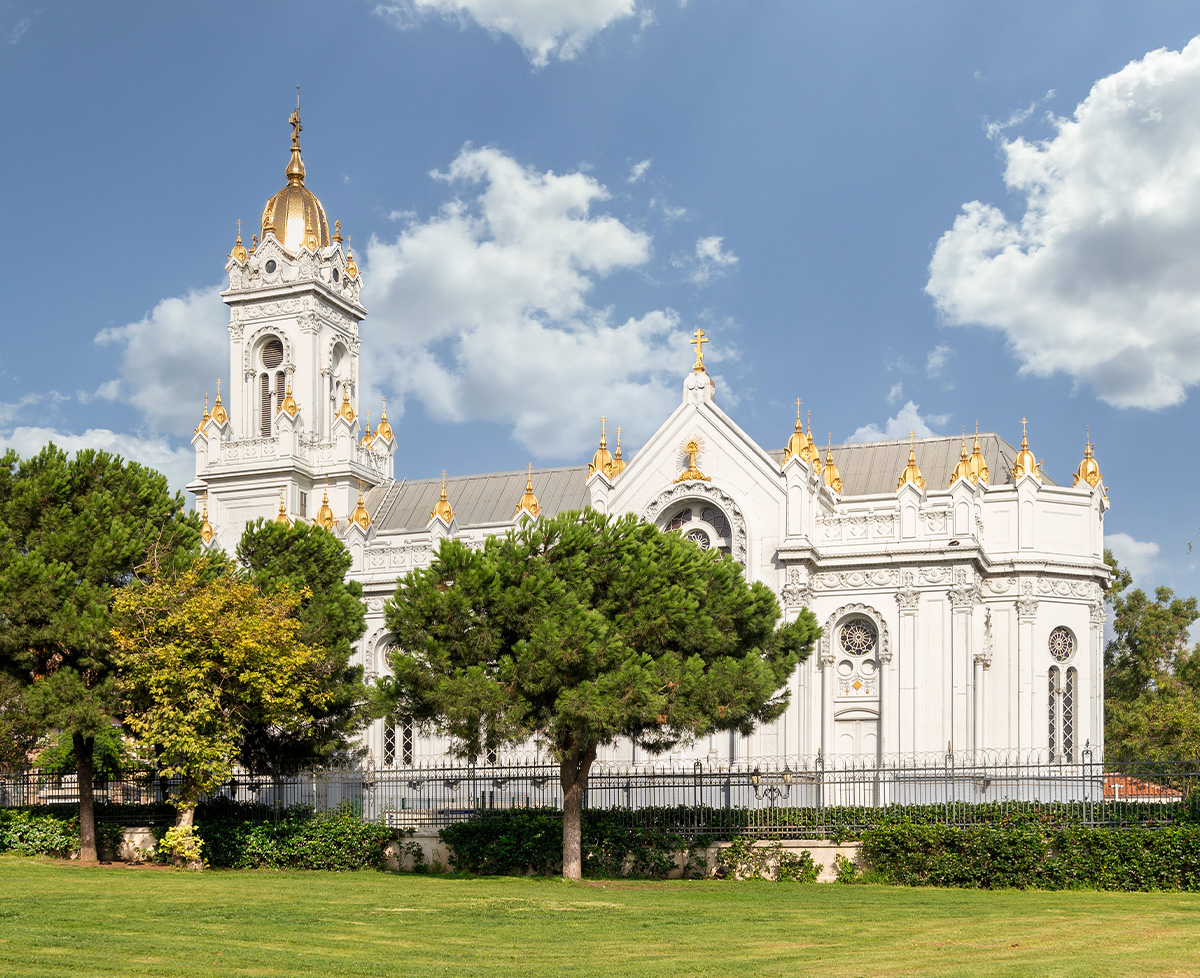Bulgarian St. Stephen Church
Symbol of Bulgarian Heritage at İstanbul
 The Bulgarian St. Stephen Church, with its captivating blend of artistry, faith, and historical significance, stands as a symbol of enduring devotion and a testament to the resilience of a community striving for religious freedom.
The Bulgarian St. Stephen Church, with its captivating blend of artistry, faith, and historical significance, stands as a symbol of enduring devotion and a testament to the resilience of a community striving for religious freedom.
In the heart of Istanbul's Balat district, a shimmering gem of history and devotion stands tall, welcoming all who come in search of solace and inspiration. The Bulgarian St. Stephen Church, a masterpiece of architectural marvel and spiritual significance, has graced this ancient city since its completion in 1898.
This sacred edifice serves as a beacon of faith for the Bulgarian community in Turkey, a testament to their unwavering devotion. Nestled within its neo-gothic and neo-baroque embrace, the church exudes an aura of grandeur and a profound sense of history. Yet, it is not just its architectural uniqueness that sets it apart; the Bulgarian St. Stephen Church is a singular entity in the world, for it is constructed entirely of iron, earning it the moniker, the "Iron Church."
This grand structure, adorned with intricate details, mesmerizes all who lay eyes upon it. As you enter, the iconostasis, a masterpiece of artistry, welcomes you with its vibrant frescoes, each a mosaic of color and faith, narrating the timeless stories of Christianity. The intricate geometric patterns, rosette motifs, and meticulously crafted relief details on the exterior facade invite contemplation and admiration.
However, the story of the Bulgarian St. Stephen Church is more than a tale of architectural achievement; it is a testament to the indomitable spirit of a people yearning for religious autonomy. In 1849, Stefan Vogoridis, a luminary in the Bulgarian community and a parliamentarian during the Ottoman Empire, secured permission from the Sublime Porte to construct a church. He offered his own residence to lay the foundation for the Bulgarian Exarchate in 1850, where a wooden church was built, christened as Sveti Stefan in his honor.
A decade later, the Bulgarians made a momentous declaration: they would no longer recognize the Ecumenical Patriarch of Constantinople as their spiritual leader. This act led to their excommunication in 1872, further solidifying their quest for independence. In the face of these historical events, the Ottoman Empire granted the Bulgarians permission to construct a more imposing church to replace the wooden one. A competition was held, and the talented Armenian architect Hovsep Aznavur emerged victorious. The Austrian company Rudolf Waagner was entrusted with the monumental task of crafting this architectural wonder, a feat accomplished in a mere 1.5 years. The church's entire exterior facade, side walls, window frames, stairs, reliefs, and even the resplendent bell tower were wrought from iron, giving rise to its enduring nickname, the Iron Church. It was a true marvel of engineering and a testament to human determination.
In 1898, the doors of the Sveti Stefan Church were opened to the faithful, providing them with a sanctuary for their spiritual pursuits. The Patriarchate eventually recognized the church in 1945, further sealing its significance as a sacred and historical landmark.